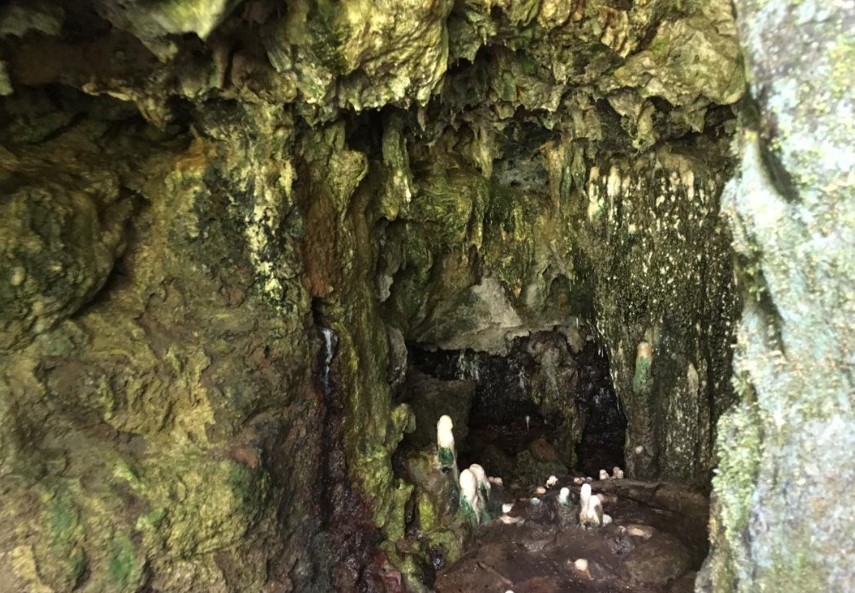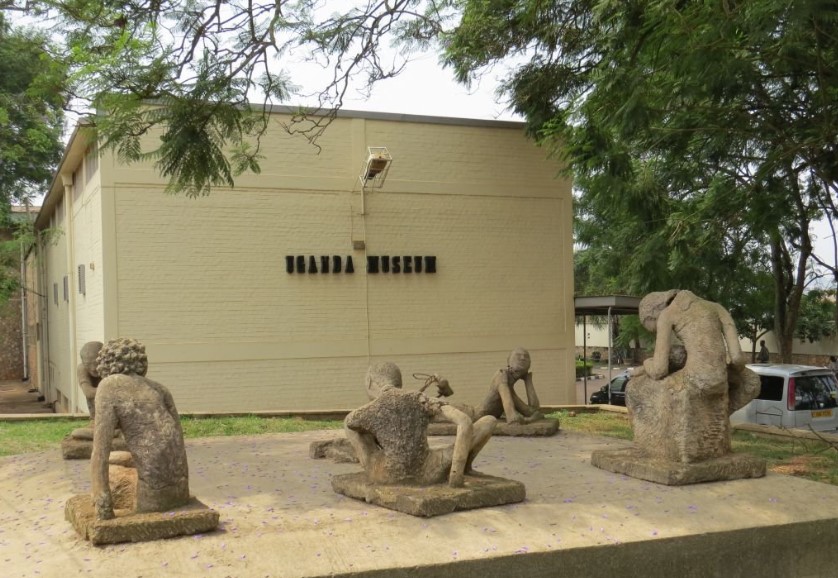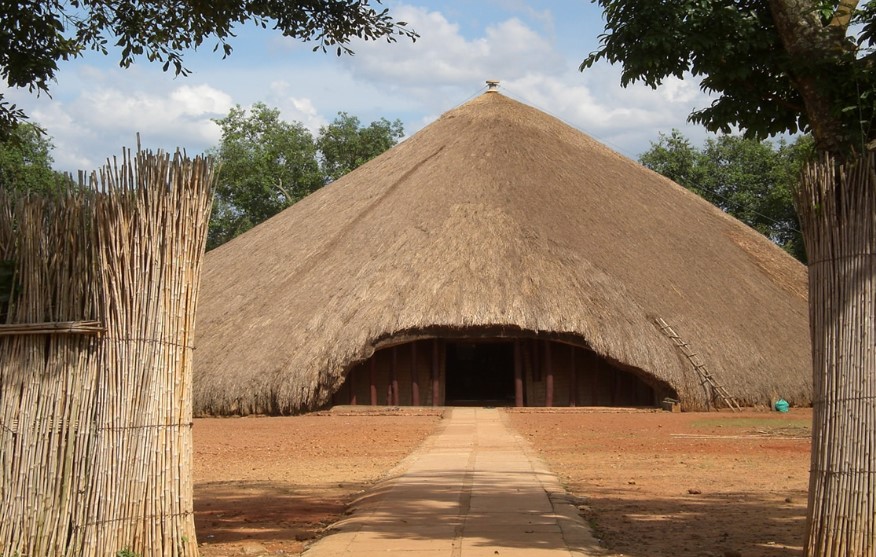Uganda’s cultural sites – Uganda is blessed with the most beautiful and attractive culture were a number of tourists come to see these cultural sites and have more experience about our culture. In this article we are going to get more information about cultural sites in Uganda.
Some of the cultural sites in Uganda include;
Kasubi Royal Tombs
The Kasubi Royal Tombs is a site for the burial ground of Buganda kings and other members of the Buganda royal family. It is a spiritual and political site for the Baganda tribe. These tombs are located in Kampala district Uganda’s largest and capital city in Rubaga division.
It became a UNESCO World Heritage Site in December 2001 when it was described as “one of the most remarkable buildings using purely vegetal materials in the entire region of sub-Saharan Africa”.
The tombs were destroyed by fire in March 2010 and the cause is still under investigation But The Buildings Are Also Still Under Restoration.
Namungongo Martyrs Shrine
Namugongo Martyrs Shrines is one of the biggest Roman Catholic church in Africa which was constructed in commemoration of the 22 catholic martyrs that were killed between 1885 to 1887 by the king of Buganda Kabaka Mwanga 11. The shrine is located in Kira Municipality, Wakiso district 15km by road from Kampala the largest and capital city of Uganda.
The Namugongo Shrines were first recognised by the Late Joshua Serufusa-Zake (1884 – 25 June 1985) whose interest in Christianity was enhanced by his father’s participation in the wars that brought Christianity to Uganda. When he was the Sabaddu of Kira Sub-County (1827 – 1928). Joshua Serufusa-Zake constructed a structure at the Namugongo site, where it appears shrines were built later for prayer.
Sezibwa Falls
Sezibwa falls are situated 35 kilometers away from Kampala the largest and capital city of Uganda along Kampala Jinja highway in Mukono district. The falls were formed as a result of water squeezing through narrow opening of rocks and dropping at great speed (17 meters) into a large pool that is about 14 meters deep.
But traditionally, the Baganda tribe believe that these falls were born by a human being one hundred years ago. There a lot of things to enjoy in Sezibwa falls and these include; nature, bird watching, canoeing, hiking, rock climbing and primate walks.
Amabere Ga NyinaMwiru
Amabere Ga NyinaMwiru is located in the western part of Uganda 10 km away from Fortportal town in Kabalore district. It’s a strong cultural heritage site among the Batooro tribe where it is located. The rock is a result of formation of stalagmites and stalactities information which we leave for the geographers and enjoy the cultural stories attached to this cave. It is nested between several trees and beautiful water falls.
Traditionally, the rocks were named after the daughter of King Bukuku named Nyina Mwiru who refused to marry the spouse who the father had chosen for her. The locals were embarrassed at how the daughter wanted to marry a man of her own choice and disobeying the king. As a result, the king ordered for her breasts to be cut off so that she would not marry anyone again and have children well natured.

Igongo Cultural Center
Igongo cultural center is a center that promotes the cultural heritage of south-western Uganda which is encompassed in the center’s motto “wisdom is rooted in the past”. with in the center, visitors can find the Eriijukiro museum – a tour of which Takes around half an hour, Eitaramiro cultural village showing the evolution of typical Nyankore and kigezi households.
Twenty-bedroom accommodation, restaurant where you can try locally sourced traditional dishes like matooke, millet bread and ghee. The Nkwanzi craft and book shop with the Mbuuro gardens which features historical sculptures of animals and people.
Igongo cultural center is located a few miles north of Mbarara on the Masaka – Mbarara road.
Uganda Museum
The Uganda Museum is located in Kampala Uganda, it displays and exhibits ethnological natural – historical and traditional life collections of Uganda’s cultural heritage. It was founded in 1908 after Governor George Wilson called for “all articles of interest” on Uganda to be procured. Among the collections in the Uganda Museum are payable musical instruments, hunting equipment’s, weaponry, archaeology and entomology.

Batwa pygmies
The batwa pygmies is a group of people living In the south-western part of Uganda in the districts of Bundibugyo, Kabale, Kisoro and Rukunjiri. Bwindi Impenetrable National Park forest was a home of the Batwa before they were evicted, causing them to become dependent on the Mgahinga and Bwindi Impenetrable Forest Conservation Trust. (MBIFCT).
Travellers move from different parts of the world to see and enjoy the short peoples Cultural Music Dance and Drama and their lifestyle. For many years these people depend on hunting and gathering from the forest.
IK people in Kidepo Valley National Park.
This is an indigenous community residing in the Karamoja region, northeast of Uganda. IK people were the first group to migrate in Karamoja from Ethiopia. They first settled in Kenya and later pushed to Uganda in Karamoja region with the aim of running away from their warrior neighbors.
They had little wealth therefore they kept cattle, goat sheep and chicken but had special skills of hunting wildlife, gathering edible fruits, flowers, leaves, tubers and cultivated land to grow some food crops in the Karamoja plains. Many people move from different parts of the world to learn more about their behaviors and culture.
Nakayima tree
The Nakayima tree is one of the oldest and strongest trees standing today in Uganda. This tree is found in Mubende district 3 hours drive from Kampala the largest and capital city of Uganda. The tree is estimated to have been planted about 650 years by princess Nakayima, a royal princess who roamed around the tree and is believed to have disappeared in to that same tree. This tree has special powers for wealth, good health and healing for those who visit and have faith in it.
Ndere Group Cultural Center
The word ‘endere’ means ‘flute’, the word Ndere Troupe therein implies to a Flute Troupe.
The flute was chosen as a symbol of beauty as it produce soothing, beautiful and irresistable music which can be manipulated to express a range of emotions; from sorrow to joy and from love to loneliness.
It also symbolises universal unity, majority people of the world have a flute in their cultures just varied by modifications. The flute is like the blood that flows in our bodies no matter our external differences. The Ndere Troupe prides itself in emphasising commonalities and celebrating the cultural rich differences.
The Ndere Troupe is a cultural development that was founded in 1986 by Dr.Rwangyezi Stephen.
This group is located in Bukoto, a kampala suburb which entertains people with traditional dances and music from Uganda’s various local tribes. The group performs at the center as well as at various events such as weddings, business functions, parties and other social gathering.
Uganda culture is so entertaining, educative and fun you can enjoy all this with the help of Funride Adventures.


Comment (0)